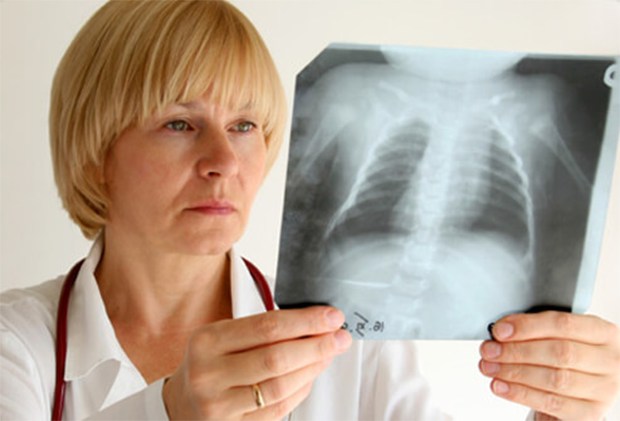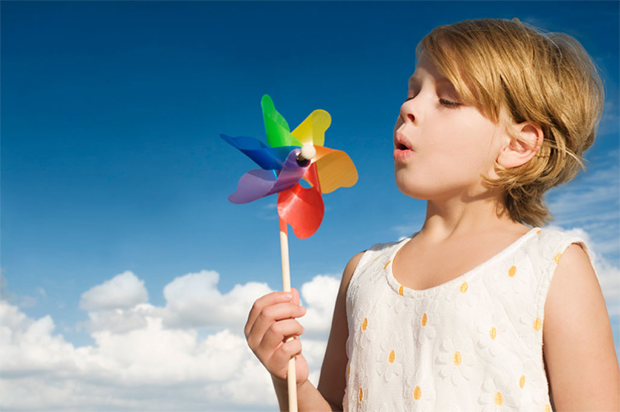|
Not all
children have the same asthma symptoms, and these symptoms can vary from
episode to episode in the same child. Possible signs and symptoms of
asthma in children include:
Frequent coughing spells, which may occur during play, at night, or
while laughing or crying
A chronic cough (which may be the only symptom)
Less energy during play
Rapid breathing (intermittently)
Complaint of chest tightness or chest "hurting"
Whistling sound when breathing in or out -- called wheezing.
See-saw motions in the chest from labored breathing. These motions are
called retractions.
Shortness of breath, loss of breath
Tightened neck and chest muscles
Feelings of weakness or tiredness
|
|
 |
|
While these are some symptoms of asthma in children, your child's doctor
should evaluate any illness that complicates your child's breathing.
Many pediatricians use terms like "reactive airways disease" or
bronchiolitis when describing episodes of wheezing with shortness of
breath or cough in infants and toddlers (even though these illnesses
usually respond to asthma medications). Tests to confirm asthma may not
be accurate until after age 5.
How Common Is Asthma in Children?
Asthma is the leading cause of chronic illness in children. It affects
about 7 million children in the United States and, for unknown reasons,
is steadily increasing. Asthma can begin at any age (even in the very
elderly), but most children have their first symptoms by age 5.
There are many risk factors for developing
childhood asthma. These include:
Nasal allergies (hay fever) or eczema (allergic skin rash)
A family history of asthma or allergies
Frequent respiratory infections
Low birth weight
Exposure to tobacco smoke before or after birth
Black or Puerto-Rican ethnicity
Being raised in a low-income environment
Why Is the Rate of Asthma in Children Increasing?
No one really knows the exact reasons why more and more children are
developing asthma. Some experts suggest that children spend too much
time indoors and are exposed to more and more dust, air pollution, and
secondhand smoke. Some suspect that children are not exposed to enough
childhood illnesses to direct the attention of their immune system to
bacteria and viruses.
How Is Asthma Diagnosed in Children?
Asthma in children can often be diagnosed based on medical history,
symptoms, and a physical exam. Keep in mind that oftentimes when you
take your infant or older child to the doctor with asthma symptoms, the
symptoms may be gone by the time the doctor evaluates the child. That's
why parents are key in helping the doctor understand the child's signs
and symptoms of asthma.
Medical history and asthma symptom description: Your child's doctor will
be interested in any history of breathing problems you or your child may
have had, as well as a family history of asthma, allergies, a skin
condition called eczema, or other lung disease. It is important that you
describe your child's symptoms -- cough, wheezing, shortness of breath,
chest pain, or tightness -- in detail, including when and how often
these symptoms have been occurring.
Physical exam: During the physical exam, the doctor will listen to your
child's heart and lungs and look for signs of an allergic nose or eyes.
Tests: Many children will also have a chest X-ray and, for those ages 6
and older, a simple lung function test called spirometry. Spirometry
measures the amount of air in the lungs and how fast it can be exhaled.
The results help the doctor determine how severe the asthma is. Other
tests may also be ordered to help identify particular "asthma triggers"
for your child's asthma. These tests may include allergy skin testing,
blood tests (IgE or RAST), and X-rays to determine if sinus infections
or gastroesophageal reflux disease (GERD) are complicating asthma. An
asthma test that measures the amount of nitric oxide in the breath (eNO)
is available in some places.
|
|

|
|
How Is Asthma Treated in Children?
Avoiding triggers, using medications, and keeping an eye on daily asthma
symptoms are the ways to control asthma in children of all ages.
Children with asthma should always be kept away from all sources of
smoke. Proper use of medication is the basis of good asthma control.
Based on your child's history and the severity of asthma, his or her
doctor will develop an Asthma Action Plan and give you a written copy.
This plan describes when and how your child should use asthma drugs,
what to do when asthma gets worse (falls into the yellow or red zones),
and when to seek emergency care for your child. Make sure you understand
this plan and ask your child's doctor any questions you may have.
Your child's written Asthma Action Plan is important to the successful
control of his or her asthma. Keep it handy to remind you of your
child's daily asthma management plan as well as to guide you when your
child develops asthma symptoms. Also make sure your child's caregiver
and school teacher has a copy of the Asthma Action Plan, so they will
know how to treat the child's symptoms if she should have an asthma
attack away from home.
For more information and for a printable asthma action plan, see WebMD's
article on Developing an Asthma Action Plan.
How Do I Give Asthma Drugs if my Child Is a
Toddler?
Infants and toddlers may use some of the same type of asthma drugs as
older children and adults. Inhaled steroids may be key to managing
infants with chronic asthma or wheezing. However, the medications are
given differently to children under 4 years of age (such as with an
asthma nebulizer and mask), and with lower daily doses.
The latest asthma guidelines recommend a stepwise approach for managing
asthma in children up to 4 years of age. This includes the use of
quick-relief medications (such as albuterol) for intermittent asthma
symptoms. A low-dose of an inhaled steroid, cromolyn, or Singulair is
the next step up. Then the intensity of the asthma treatment is focused
on controlling their asthma. If the child's asthma is controlled for at
least three months, your child's doctor may decrease the medication or
"step down" the asthma treatment. Consult with your asthma specialist
for exact medications and dosages.
Depending on your young child's age, you may use inhaled asthma drugs or
liquid medications delivered with an asthma nebulizer. A nebulizer
delivers asthma medications by changing them from a liquid to a mist. As
a mist, your child will breathe the medications through a face mask.
These breathing treatments usually take about 10-15 minutes and may be
given up to four times a day. Your child's doctor will tell you how
often to give your child breathing treatments.
Depending on their age, your child may be able to use a metered dose
inhaler (MDI) with a spacer. A spacer is a chamber that attaches to the
MDI and holds the burst of medication. This allows your child to breathe
the medication into his lungs at his own pace. Talk with your child's
doctor about your child using an MDI with a spacer.
What Are the Goals of Treating my Child's Asthma?
|
|

|
|
Asthma can't be cured, but it can be controlled. The goals of asthma
treatment for your child are listed below. If your child is unable to
achieve all of these goals, you should contact your child's doctor for
advice. Your child should be able to:
Live an active, normal life
Prevent chronic and troublesome symptoms
Attend school every day
Avoid asthma symptoms during the night
Perform daily activities, play, and engage in sports without difficulty
Stop the need for urgent visits to the doctor, emergency department, or
hospital
Use and adjust medications to control asthma with little or no side
effects
By learning about asthma and how it can be controlled, you take an
important step toward managing your child's disease. Work closely with
your child's asthma care team to learn all you can about asthma, how to
avoid asthma triggers, what asthma drugs do, and how to correctly give
asthma treatments.
Will My Child Outgrow Asthma?
So much is unknown about infant lung function and asthma. Experts
believe that a child is more likely to be diagnosed with asthma after
the age of 7, however, if he has had multiple wheezing episodes, has a
mother with asthma, or has allergies.
In addition, once a person's airways become sensitive, they remain that
way for life. However, about 50% of children experience a noticeable
decrease in asthma symptoms by the time they become adolescents,
therefore appearing to have "outgrown" their asthma. Some of these
children will develop asthma symptoms again as adults. Unfortunately,
there is no way to predict whose symptoms will decrease during
adolescence and whose will return later in life. |